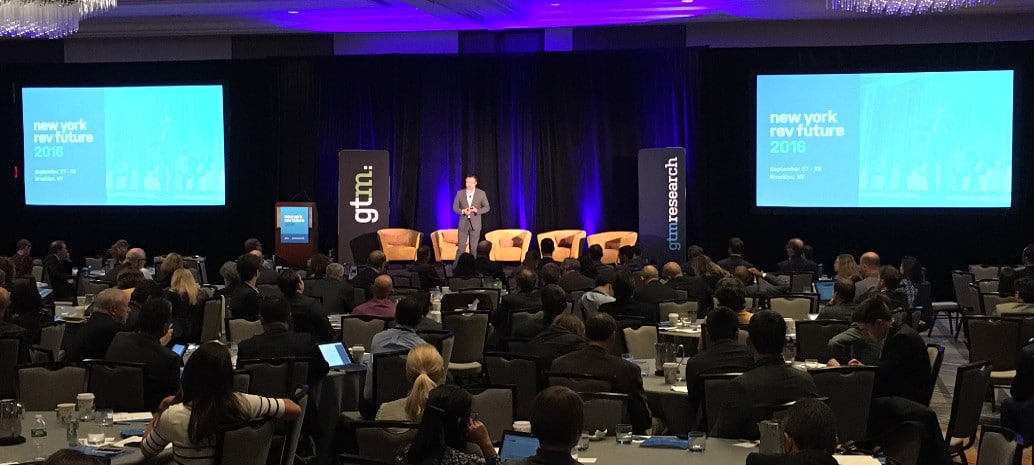In April 2014, New York announced its Reforming the Energy Vision (REV) process, a groundbreaking initiative to transform the state’s electricity grid into the “grid of the future”. This involves opening up the distribution system to competition and creating a new system based on rooftop solar, batteries and other distributed solutions meeting demand via two-way flows of electricity.
At the Greentech Media’s REV Future 2016 conference in Brooklyn, it is clear that two and a half years later REV is still very much an idea, and a remarkably murky one at that. While states like California have taken discrete and concrete steps towards grid transformation, REV hangs over the policy landscape of New York, with many details a long way from being worked out.
This is not to say that nothing has happened. New York’s Department of Public Services (DPS) has filed a number of orders under the REV proceeding, but these largely sketch out grand designs and not specifics. One challenge here may be the sheer ambition of the initiative.
“There is an enormous amount of transformation that has to happen for utilities to take on the role that is being presented,” noted Booz Allen Hamilton Executive VP Gary Rahl in a morning presentation. New York “energy czar” Richard Kauffman echoed this, noting that “there is still a lot of work to be done in this tough interface between the private sector and government.”
Knowledge is power
A core problem is information, and lack thereof. Utilities filed a set of initial plans and objectives for their own transformation as managers of an open distribution system, called Distribution System Implementation Plants (DSIPs), this summer. However, Vote Solar notes that there is still a “lot of work to do”.
“The first round of DSIPs did not meet the requests of state regulators for the amount of data, plans and forecasting,” Vote Solar Regional Manager Sean Garren told pv magazine.
This lack of data has compounded a central problem: that without data, there is no starting point for the entrepreneurs who the state is placing its faith in to develop businesses to supply many of the services that the new system will be based on.
NRG Energy VP Peter Fuller, who spoke on the keynote panel noted that metering, telemetry and visibility into the grid represent “really important foundational work” that still needs to happen. “We need to let that foundational stuff play out a bit, and the participation will come,” explained Fuller.
But the lack of clarity is not entirely due to utility intransigence. Fuller notes that the structure of compensation for various services to be provided under REV is “hugely important”. And while this clearly is an issue, at least one speaker at the conference pointed out that entrepreneurs never have complete data on customers, and still make business decisions.
Value of DER
Initial steps have been taken to create the kind of price signals that are needed to drive deployment of distributed energy resources (DER). Last October regulators issued an order that bases compensation for DER on the formula LMP + D, with LMP representing locational marginal price of energy and D representing the unique benefits of distributed energy.
Adding to this, last December DPS opened a Value of DER proceeding, which is set to deliver an interim valuation by the end of the year. The solar industry has not been silent in this process, and in April a partnership of solar companies including SolarCity proposed putting externalities into “D”, using the U.S. Environmental Protection Agency’s social cost of carbon to determine a constant value for emissions reductions.
Sean Garren of Vote Solar says that he is optimistic about the Value of DER proceeding, which among other things will inform a successor policy to net metering. “I think this is going to deliver something that we can build on in the next couple of months,” stated Garren.
Starting where you are
And while the larger issues of REV still need to be worked out, REV so far has produced a number of demonstration projects. One of the largest of these is the Brooklyn Queens Demand Management (BQDM) project, where utility ConEdison awarded contracts from demand response providers/aggregators that will result in 22 MW of peak demand reductions in 2018.
BQDM will serve as part of 52 MW of demand reduction, which combined with 17 MW of distributed resource investments is expected to defer the need for a $1.2 billion substation upgrade.
Other REV demonstration projects have included microgrids, which Booz Allen Hamilton’s Rahl have noted were “very well received by the community”. “There actually is a lot of interest throughout the state for resiliency and clean energy. And for dealing with peak prices,” noted Rahl.
In the keynote, National Grid Leader of New Energy Solutions Carlos Nouel noted that the benefits of these demonstration projects go beyond testing out technology and markets. “Demonstration projects are important for changing the culture at utilities,” Nouel explains.
Risky business
Given the promise of REV and need to accommodate the rising volume of distributed solar – let alone the threat that climate changes presents – all eyes are on next steps. “The pilot projects are great, but how can we scale that?” asked GTM Research Director of Grid Edge Steve Propper.
While the details are worked out, the solar industry, battery makers and other players must deal with one of the most difficult things for small industries – uncertainty. “Storage is going to need some bedrock policies that it can build on,” notes Vote Solar’s Sean Garren.
At the end of the day, the technological issues do not look as thorny as the economic ones. The entire process involves risk for many players, including both utilities and the solar industry. “When you throw everything in the air, it creates a lot of uncertainty for smaller industries,” Garren explains.
However, New York energy czar Kauffman may have had the last word on this. “With innovation comes risk,” admitted Kauffman. “But we are also taking risk under the current course.”
This content is protected by copyright and may not be reused. If you want to cooperate with us and would like to reuse some of our content, please contact: editors@pv-magazine.com.









By submitting this form you agree to pv magazine using your data for the purposes of publishing your comment.
Your personal data will only be disclosed or otherwise transmitted to third parties for the purposes of spam filtering or if this is necessary for technical maintenance of the website. Any other transfer to third parties will not take place unless this is justified on the basis of applicable data protection regulations or if pv magazine is legally obliged to do so.
You may revoke this consent at any time with effect for the future, in which case your personal data will be deleted immediately. Otherwise, your data will be deleted if pv magazine has processed your request or the purpose of data storage is fulfilled.
Further information on data privacy can be found in our Data Protection Policy.